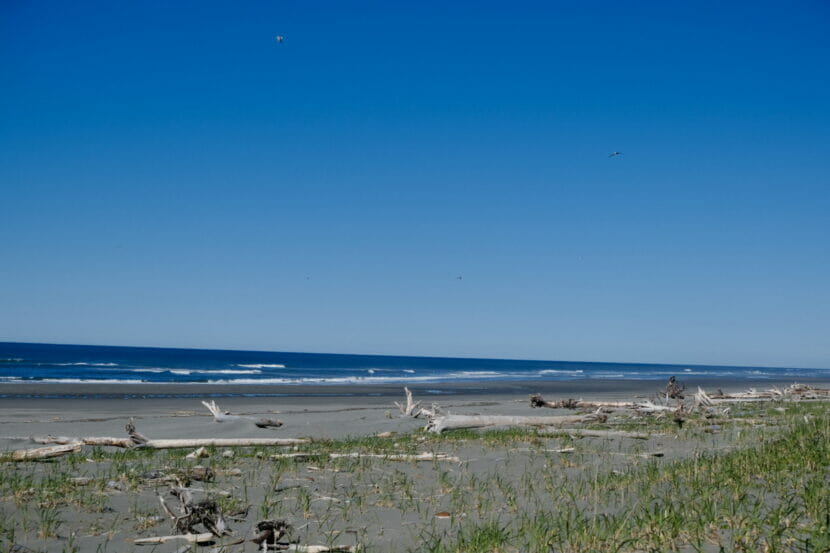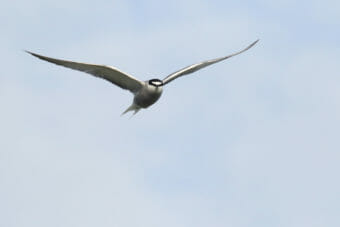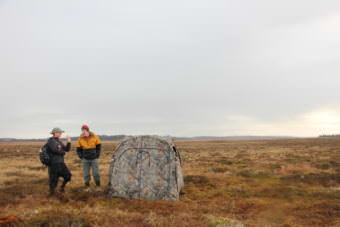
On Saturday, a group of ten kayakers set out from Strawberry Point in Yakutat for a grassy, log strewn spit of sand known as Blacksand Spit. Most of them were birders, and most were visiting from other parts of the state or the country to see the uncommon Aleutian tern, a seabird species known for its long migration and potential decline in the last several decades.
The visitors were in town for the Yakutat Tern Festival, which honors the Aleutian tern as well as its better known and more abundant cousin, the Arctic tern. Blacksand Spit is the largest and southernmost known nesting colony for Aleutian terns. The group crossed it in a single file, to avoid disturbing nests, and trained their binoculars on the sky as hundreds of terns wheeled over the Gulf of Alaska.
The Aleutian tern is now the subject of a multiyear population study, organized by the Pacific Seabird Group’s Aleutian Tern Technical Committee. Anecdotal evidence and limited data strongly suggest the terns’ population has decreased substantially over the last few decades, and there simply isn’t enough research to determine whether they need protected status or not.
Susan Oehlers, Yakutat’s sole wildlife biologist for the National Forest Service, is responsible for monitoring the Aleutian tern population at Blacksand Spit and she co-chairs the technical committee behind the study.
“I feel like it’s my responsibility living here and being the local wildlife biologist to do what I can to learn more about them and try to be a good steward,” she said.
Her group worked to create the statewide survey and monitoring plan that was implemented this year.
“What we built towards was getting better, consistent methods of surveying a colony, so everyone that’s monitoring turns is doing it the same way,” she said.
Oehlers gave an Aleutian tern update at the festival, which started in 2017 as an economic driver for the town of about 500 people and to raise awareness for terns.
The festival and now the study are timed around the nesting season for terns. Peak hatch is usually in early July.
Anne Schaefer of Prince William Sound Science Center coordinates the study for the Pacific Seabird Group.
“There’s something going on with these terns,” Schaefer said. “But what we don’t know is — are the numbers actually declining? Or do we just not know where their colonies are? You know, have they just moved?”
Her team conducts aerial surveys primarily along the coastline. This year, the study will survey the area from Cordova to Gustavus.
It’s hard to tell the difference between Arctic and Aleutian terns from the air, so they log any nesting colonies and then return on foot to make sure Aleutian terns are present and conduct a count. Field work just started and they have logged more than two dozen colonies.
Seabirds are dependent on the marine environment, so Schaefer says she hopes to gain some insight into what’s happening in the marine ecosystem as a result of the study.
“There’s a lot of different things that could be happening, but there hasn’t been any pinpointed problem,” she said. “I think we’re really just trying to understand like, are they declining?”
This story originally appeared in the Alaska Beacon and is republished here with permission.


